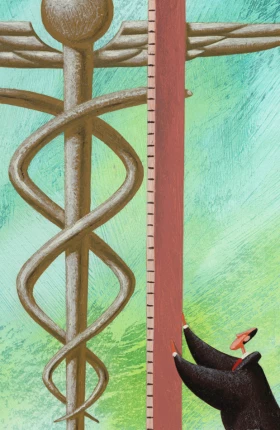This article is part of a series on value-based hospitals .
For academic medical centers, the increased focus on measuring and understanding patient outcomes comes with an added benefit: the opportunity to achieve better connections between research and health care delivery. Over the past 15 years, so-called translational medicine—“from bench to bedside”—has been a major goal of biomedical research. And yet, the traditional model of health care delivery—with its functional organization of specialist departments, its increasing focus on productivity rather than quality of care, and its weak data management—is not well suited to the demands of clinical research, even in a university hospital setting. This disconnect has been a major reason for the declining number of clinical trials in many countries.
Most medical research focuses on diseases and patient groups, on measuring end results and outcomes, and on strict data management and analysis. The requirement to collect data separately—outside the everyday care-delivery process—has not only made research expensive but also created a cultural barrier in which research is often considered a special interest with a limited direct linkage to the improvement of clinical practice and, ultimately, health outcomes.
When the measurement of real-world health outcomes is part of care delivery, however, it becomes possible to fully align research and clinical practice. A good example of this principle is the recent use of large, low-cost, registry-based, randomized clinical trials in which outcomes data collected routinely by disease-specific quality registries is used to assess the effectiveness of existing clinical practices and treatments.
For instance, a team of Swedish, Danish, and Icelandic researchers recently conducted a “multicenter, prospective, randomized, controlled, open-label clinical trial” to test the effectiveness of coronary-artery thrombosis aspiration , a technique that is increasingly used along with percutaneous coronary intervention (PCI) for patients suffering from ST-segment-elevation myocardial infarction (STEMI), a type of heart attack. The trial enrolled 7,244 STEMI patients from the comprehensive Swedish Coronary Angiography and Angioplasty Registry. The patients were randomly assigned to receive either manual thrombus aspiration followed by PCI or PCI alone. The study found that routine thrombus aspiration before PCI did not significantly reduce mortality and, therefore, did not contribute to health care value.









